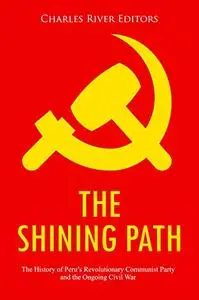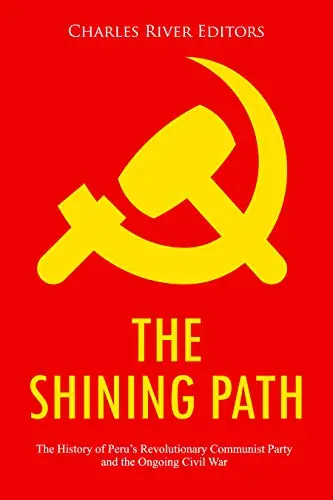The Shining Path: The History of Peru’s Revolutionary Communist Party and the Ongoing Civil War by Charles River Editors
English | April 20, 2020 | ISBN: N/A | ASIN: B087DXHWLP | 57 pages | EPUB | 0.97 Mb
English | April 20, 2020 | ISBN: N/A | ASIN: B087DXHWLP | 57 pages | EPUB | 0.97 Mb
*Includes pictures
*Includes a bibliography for further reading
*Includes a table of contents
On the evening of May 17, 1980, a day before the Peruvian electorate, the most representative in the nation’s history, was due to go to the polls for the first authentic presidential election since 1963, a curious thing happened. In the tiny mountain town of Chuschi, little more than a hamlet nestled in a valley on the western slopes of the Andes, a group of armed youth broke the lock on the town hall and removed all of the ballot boxes, papers and voting lists prepared for the following day. These were carried out into the town square and burned. The group identified itself as Sendero Luminoso, the “Shining Path,” declaring this action to be the commencement of the armed phase of the “People’s War.”
In the avalanche of press coverage for the election, the incident was scantly reported and generally overlooked. It was an exciting and energetic time in Peruvian politics, as the country sought to shake off nearly two decades of military rule and dictatorship, and a minor disturbance such as this in the rural countryside was of little interest. Nor, for that matter, was the theft of dynamite from a handful of local mines, although the handful of isolated bomb blasts that followed did stir a certain amount of curious reporting. Soon, however, the citizens of Lima began to notice the frequency of stray dogs found hanging from traffic lights and lamp posts. Images that have since become iconic in the chronicles of the Shining Path began appearing in local newspapers. They were described by Peruvian journalists and satirist Santiago Roncagliolo: “My earliest memory of Peru is a newspaper photograph from 1980 of dead dogs hanging from lamp posts in downtown Lima. Their stiff bodies were wrapped in posters that said: ‘Deng Xiaoping Son of a Bitch’. In the picture, bewildered policemen are cutting down the bodies in the early-morning light. Some of the dogs drip blood, others are painted black, but most are simply dead.”
Roncagliolo then went on to discuss what this all meant in the philosophical context of local political aspirations, for clearly it meant something: “In our house, the picture – and the murders that came later – was the subject of lengthy deliberations. My father’s friends wondered if the time was ripe for a revolution in Peru. For all of them, revolution in Latin America was imminent, as inevitable as hurricanes in the Caribbean. They never wondered if it would come but only when, and in which countries it would triumph. At home, in long sessions cloudy with cigarette smoke, bearded men in tortoiseshell glasses would debate, conspire, or just hide out.”
This flush of macabre and ritualistic statements, apart from being confusing and a little unnerving, were also inescapably folkloric and sinister. This in time would become the hallmark of Sendero Luminoso as it emerged thereafter as one of the largest and most violent of Latin American guerrilla movements.
Despite these ritualistic overtones, the founder of the movement was an eccentric and perhaps somewhat brilliant if not delusional Peruvian professor of philosophy by the name of Abimael Guzmбn. Guzmбn, highly cultured and educated, was absorbed in Marxist social theory and atheism. He decried religion as a “social phenomena, the product of exploitation that will end with the end of exploitation, to be swept aside as a new society arises.”
The Shining Path: The History of Peru’s Revolutionary Communist Party and the Ongoing Civil War looks at the Peruvian party, the people behind it, and the history of the violence. Along with pictures and a bibliography, you will learn about the Shining Path like never before.
Feel Free to contact me for book requests, informations or feedbacks.
Without You And Your Support We Can’t Continue
Thanks For Buying Premium From My Links For Support
Without You And Your Support We Can’t Continue
Thanks For Buying Premium From My Links For Support



